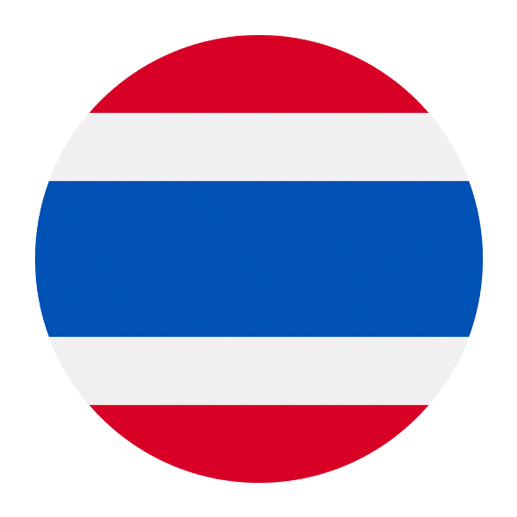Learning a new language can be an exciting and enriching experience, especially when you connect it with the culture from which it originates. Thai, the official language of Thailand, is no exception. One unique and enjoyable way to learn Thai is through traditional folk music. Thai folk music is a treasure trove of linguistic and cultural knowledge, offering an authentic glimpse into the lives, values, and traditions of Thai people. In this article, we will explore how you can leverage Thai folk music to enhance your language learning journey.
The Rich Cultural Heritage of Thai Folk Music
Thai folk music, or “Phleng Thai Doem,” is an integral part of Thailand’s cultural heritage. It encompasses a variety of musical styles and forms that have been passed down through generations. These songs often reflect the daily lives, religious beliefs, and historical events significant to different regions in Thailand. By immersing yourself in Thai folk music, you not only learn the language but also gain a deeper appreciation for Thai culture and history.
Understanding the Different Types of Thai Folk Music
Thai folk music is diverse and varies significantly from one region to another. Some of the most well-known types include:
1. Mor Lam: Originating from the northeastern region of Thailand, Isan, Mor Lam is characterized by its fast tempo and the use of traditional instruments like the “khaen” (a bamboo mouth organ). The lyrics often tell stories of love, hardship, and rural life.
2. Luk Thung: Also known as Thai country music, Luk Thung blends traditional Thai melodies with modern influences. The lyrics typically address themes of love, heartbreak, and the struggles of rural people.
3. Lanna Music: From the northern region of Thailand, Lanna music features unique instruments such as the “saw duang” (a type of fiddle) and the “salor” (a three-stringed lute). The songs often have a spiritual or ceremonial aspect.
4. Southern Thai Music: This style includes “Nora” and “Manora,” traditional dance-drama forms that combine music, dance, and storytelling. The music is lively and rhythmic, often performed with percussion instruments and flutes.
Benefits of Learning Thai through Folk Music
Learning Thai through folk music offers several advantages that can enhance your language acquisition process:
1. Improved Pronunciation and Listening Skills: Folk songs are sung in the natural rhythm and intonation of the language, providing an excellent model for pronunciation. Listening to and singing along with these songs can help you develop a more authentic accent and improve your listening comprehension.
2. Vocabulary Expansion: Folk songs are rich in vocabulary, including colloquial expressions and regional dialects. By learning the lyrics, you can expand your vocabulary and gain familiarity with words and phrases not commonly found in textbooks.
3. Cultural Context: Music is a reflection of culture. Through folk songs, you can learn about Thai customs, traditions, and values. This cultural context can make the language more meaningful and memorable.
4. Memory Retention: Music aids memory retention. The melodies and rhythms of songs can make it easier to remember words and phrases. The repetitive nature of choruses and verses reinforces learning.
5. Enjoyment and Motivation: Learning through music is fun and engaging. It adds variety to your study routine and keeps you motivated. Singing along with your favorite folk songs can make language learning an enjoyable experience.
Strategies for Learning Thai through Folk Music
To effectively learn Thai through traditional folk music, consider the following strategies:
1. Start with Simple Songs
Begin with simple and slow-paced songs that are easier to understand. As you become more comfortable with the language, you can gradually move on to more complex songs. Look for songs with clear pronunciation and repetitive lyrics.
2. Use Lyrics and Translations
Find the lyrics and translations of the songs you are learning. Websites, language learning apps, and YouTube often provide lyrics with English translations. Reading along with the lyrics while listening to the song can help you understand the meaning and context.
3. Break Down the Lyrics
Break down the lyrics into smaller sections and study them in detail. Focus on understanding the meaning of each word and phrase. Use a dictionary or language learning app to look up unfamiliar words. Write down new vocabulary and practice using it in sentences.
4. Sing Along
Singing along with the song is a great way to practice pronunciation and improve your speaking skills. Don’t worry about making mistakes; the goal is to mimic the sounds and intonation as closely as possible. Repetition will help you get better over time.
5. Analyze the Cultural Context
Take the time to learn about the cultural and historical context of the song. Research the background of the song, the region it comes from, and its significance. Understanding the cultural context can deepen your appreciation for the song and enhance your language learning experience.
6. Engage with Native Speakers
If possible, engage with native Thai speakers and discuss the songs you are learning. Ask them to explain the meaning of certain words or phrases and share their insights on the cultural significance of the songs. This interaction can provide valuable learning opportunities and improve your conversational skills.
Recommended Thai Folk Songs for Language Learners
To get you started on your journey of learning Thai through folk music, here are some recommended songs from different regions of Thailand:
1. “Lam Plearn” by Jintara Poonlarp: A popular Mor Lam song that tells a story of love and longing. The lyrics are relatively simple, making it a good choice for beginners.
2. “Rak Khun Khao Lae” by Pumpuang Duangjan: A classic Luk Thung song that addresses themes of love and separation. The melody is catchy, and the lyrics provide a rich source of vocabulary.
3. “Saen Saeb” by Carabao: A folk-rock song that blends traditional Thai music with modern influences. The lyrics reflect social issues and the struggles of rural people.
4. “Loy Krathong” (Traditional Song): A traditional song associated with the Loy Krathong festival, celebrated in November. The song is simple and repetitive, making it easy to learn and sing along.
5. “Phu Phae” by Khruangbin and Khun Narin: A collaboration between a Thai folk band and an international band, this song features traditional Thai instruments and melodies. The lyrics are minimal, allowing you to focus on the music and rhythm.
Conclusion
Learning Thai through traditional folk music is an enjoyable and effective way to enhance your language skills. By immersing yourself in the rich cultural heritage of Thai folk music, you can improve your pronunciation, expand your vocabulary, and gain a deeper understanding of Thai culture. Whether you are a beginner or an advanced learner, incorporating folk music into your language learning routine can make the process more engaging and rewarding. So, grab your headphones, find some Thai folk songs, and start singing your way to fluency!

